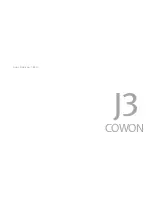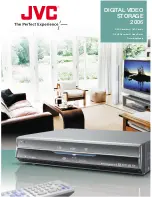
DC520 – 8•16•96 ver (D)
Operation
8
tions. Power On/Off is NOT controlled via
the remote system.
Maintenance
Cleaning the Tape Heads
Tape heads should be cleaned periodical-
ly to remove tape particles which gradu-
ally build up on the heads during
normal use. This dirt will impair sound
quality and may cause increase tape
head wear. Tape heads may be cleaned in
one of two ways:
1. Use a commercial tape cleaning cas-
sette. A wide variety of these products is
available from your dealer. Carefully fol-
low the instructions in the cleaning kit to
avoid damage to your DC520.
2. Remove the cassette from the transport
to be cleaned. Slightly dampen a cotton
swab with isopropyl alcohol or the tape
head cleaning solution available from
many dealers. Gently rub the exposed
surfaces of each head. Use a second
moistened swab to clean other metal sur-
faces that may be coated with tape
residue such as guide pins. Be careful to
keep the swab away from rubber rollers
unless you are using a cleaning liquid
that is specifically approved for use on
rubber rollers.
Demagnetization
Tape heads and other internal parts will
gradually pick up magnetic fields that
may add noise to your recordings or pos-
sibly cause partial erasure of recorded
tapes. To prevent this problem, tape
heads should periodically be demagne-
tized using either of two devices:
1. A battery powered demagnetizer is eas-
iest to use. In the shape of a tape cassette,
it simply needs to be inserted into the
transport. Carefully follow the manufac-
turer’s instructions to insure proper
results.
2. Hand held, AC powered, demagnetizers
are more effective as they generate
stronger fields. Consult your dealer for
information on this type of unit and be
certain to follow the instructions carefully.
When using this type of unit be certain to
keep it away from prerecorded tapes when
it is turned on, as it may erase them.
Care of Tapes
1. Store cassettes in their cases, in a loca-
tion away from direct sunlight, excessive
heat and high humidity.
2. Avoid placing a tape near a television
set or loudspeaker. Their magnetic fields
may partially erase the material on a
recorded tape.
3. To avoid accidental erasure of the
material on a cassette, remove the two
small square tabs located on the top
edges of the cassette. When these tabs are
removed the tape may not be used for
recording. To record on a tape that has
previously had the protection tabs
removed, carefully cover the small holes
with adhesive tape.
4. Do not use old cassettes whose internal
tape reels no longer move smoothly. If
you hear unusual noises during tape
motion it is wise to discard the tape to
prevent jams or damage to your
machine.
Track System:
4 Track, 2 Channel Stereo
Tape Speed:
Normal Play/Record: 1
7
⁄
8
ips (4.76 cm/sec)
High Speed Copy: 3
3
⁄
4
ips (9.5 cm/sec)
Wow and Flutter (WRMS): 0.06%
Frequency Response (Overall, –20 dB)
Metal Tape:
25Hz–19Khz
Chrome Tape:
25Hz–18Khz
Normal Tape:
25Hz–17Khz
Signal to Noise Ratio (Overall):
Dolby C on:
79 dB
Dolby B on:
69 dB
NR Off, 3% THD:
59 dB
Specifications
Fast Wind Time:
110 seconds for C-60
Line Input:
97 mV, 50K ohms
Line Output:
0.52 V for 50K ohm load
Headphone Impedance:
8 ohms
Dimensions (W x H x D)
17.4 x 5.8 x 11.2 inches
442 x 147 x 284 mm
Weight
10.14 lbs / 4.6 kg.
Power Requirement
120 VAC / 60 Hz
Power Consumption
14 Watts
•DC520 (d).qx 11/6/96 12:02 Page 11






























